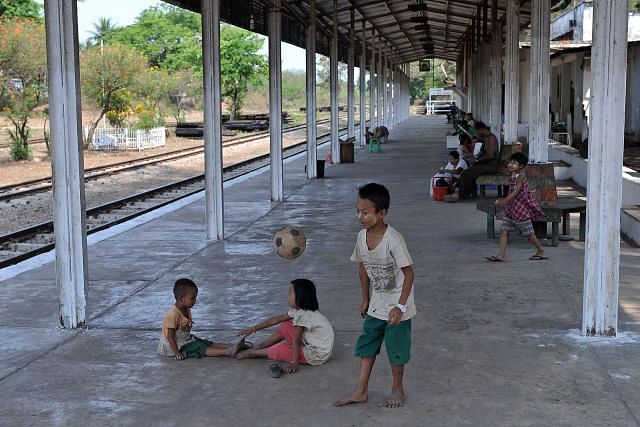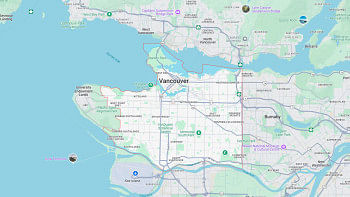Myanmar looks to revive abandoned 'Death Railway'
 Children play at the railway station in Thanbyuzayat, in Myanmar's eastern Mon state. Photo: AFP
Children play at the railway station in Thanbyuzayat, in Myanmar's eastern Mon state. Photo: AFP
An elegant cemetery in strife-torn southeast Myanmar has long stood as a lonely testament to the fate of thousands of prisoners of war who died building Japan's "Death Railway".
As the fast-changing nation now opens to the world, a reformist regime is considering rebuilding a stretch of the notorious World War II track to attract tourists and help develop border areas, where memories of the line have been eclipsed by conflict and poverty under decades of junta rule.
Local gardeners pluck weeds and tend flowers between neat lines of graves at the Thanbyuzayat War Cemetery in Mon state for some 3,000 Allied troops who died building the line between Myanmar and neighbouring Thailand.
"After seeing this cemetery people do not want to see war. There should not be war in the whole world," gardener Myat Soe told AFP.
"Because the soldiers died the way they did the world remembers them with sorrow. Dying fighting is honourable, but dying like this is very sad."
Many epitaphs at the site, funded by the Britain-based Commonwealth War Graves Commission, are a heart wrenching testament of how bewilderingly distant the country then called Burma was for the families of those killed.
"We were not there to clasp your hand, you passed away without a last good-bye," reads the epitaph for 26-year-old Lance Serjeant Harry Dawes, of the Loyal Regiment, who died in September 1943.
Exhaustion, starvation, disease and torture were the chief causes of fatalities among those impelled by the invading Japanese to gouge a rail route through dense jungle and solid rock between October 1942 and December 1943.
About 13,000 prisoners of war -- many captured in Singapore, the Malay Peninsula and what was then the Dutch East Indies -- died during construction, along with up to 100,000 civilians, mostly forced labour from the region.
Robert Goodwin, an Australian veteran who worked on the infamous "Hellfire Pass" cutting on the Thai side of the border, said the men's relentless toil involved hacking through rock almost completely by hand.
"Every day that we worked, if anyone seemed to be slowing up they'd be belted with not just hands or pickaxes but with wire whips, with anything they could lay their hands on. The Japanese were cruel by anybody's standards."
On the Thai side, hordes of foreign visitors flock to see the track and bridge made famous by the film "The Bridge Over the River Kwai", and to ride on a stretch of the line still in operation.
The town of Kanchanaburi, a popular destination about three hours drive from the capital Bangkok, generated tourism revenue of over 2.4 billion baht ($84 million) last year, according to Thai officials.
That fact is not lost on Myanmar authorities keen to encourage development in the southeast of their country -- a region emerging from isolation after years of civil war.
Ceasefire deals were reached last year between local ethnic Karen and Mon rebels under a new quasi-civilian government which took power two years ago after decades of harsh military rule ended.
Surveys have now begun to trace the route from Thanbyuzayat to Three Pagodas Pass at the Thai border, according to an official from Myanmar Railways, who asked not to be named.

 For all latest news, follow The Daily Star's Google News channel.
For all latest news, follow The Daily Star's Google News channel. 



Comments